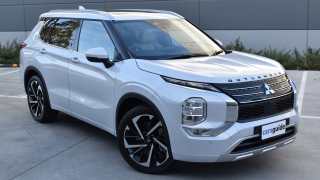Our test vehicle is the five-seat California Beach TDI 340, with a 2.0-litre four-cylinder turbo-diesel engine, seven-speed DSG (direct shift gearbox) and VW’s 4Motion all-wheel-drive system. It has a manufacturer's suggested retail price of $86,990 (plus on-road costs).
Our test vehicle has a few extra options over standard – including the Appearance package ($5760), Two-tone paint ($3990), electric pop-top roof ($2990), and the off-road package ($1600).
The appearance package includes art velour micro-fleece seat-covering with leather seat bolsters, seat heating for driver and front passenger seat, LED headlamps with separate LED daytime running lights and LED tail-lights, headlight range-adjustment (automatic), high-beam light assist, and the digital cockpit (more about that later).

The two-tone paint is described as “Candy White with Bay Leaf Green”.
The electric pop-top roof has two side windows and a panorama front opening window.
The off-road package consists of a mechanical rear differential lock and hill descent control.

All of those add-ons push the price as tested to $101,330 (plus on-road costs).
Available options that aren’t on our test vehicle include a Driver Assistance Package (with adaptive chassis control and parking assist, for $2290), and an Electric Door Package ($2590).
Standard features on the California Beach include (take a breath) 180° swivel seats (the driver's seat and the front passenger) with armrests and lumbar supports, the full-length rail system to rearrange or remove seats, a power latching sliding door on the left and right, power latching tailgate, Discovery Media 8.0-inch navigation system, colour touch display (with easily initiated Apple CarPlay and Android Auto), USB-C/AUX/SD input, six speakers, FM frequency, wireless app-connect, electrically folding heated exterior door mirrors, automatic headlights with rain-sensing wipers and dimmable rear view mirror, privacy glass in the passenger compartment, Climatronic air-conditioning system, fully sprung loft bed (1200mm x 2000mm) with comfortable-sprung base and mattress, bed extension for rear bench seat with comfort sleeping mattress, camping table and two folding chairs, camper control unit with touchscreen, pull-out awning with housing and rail in black or silver, programmable auxiliary air parking heater, second battery, 17-inch Aracaju wheels (with a steel spare), and trailer-wiring preparation.

The seats have “Quadratic” cloth upholstery in Titanium Black as standard; our test vehicle, as mentioned, had the appearance package’s art velour micro-fleece seat-covering with leather seat bolsters.
Exterior colour options include Candy White, Ascot Grey, Cherry Red, Pure Grey (all solid); and
Bay Leaf Green, Copper Bronze, Fortana Red, Indium Grey, Mojave Beige, Ravenna Blue, Reflex Silver, Starlight Blue. Pearlescent: Deep Black (all metallic:); or two-tone options such as Candy White with Copper Bronze, Candy White with Bay Leaf Green (on our test vehicle), or Candy White with Ascot Grey.






















